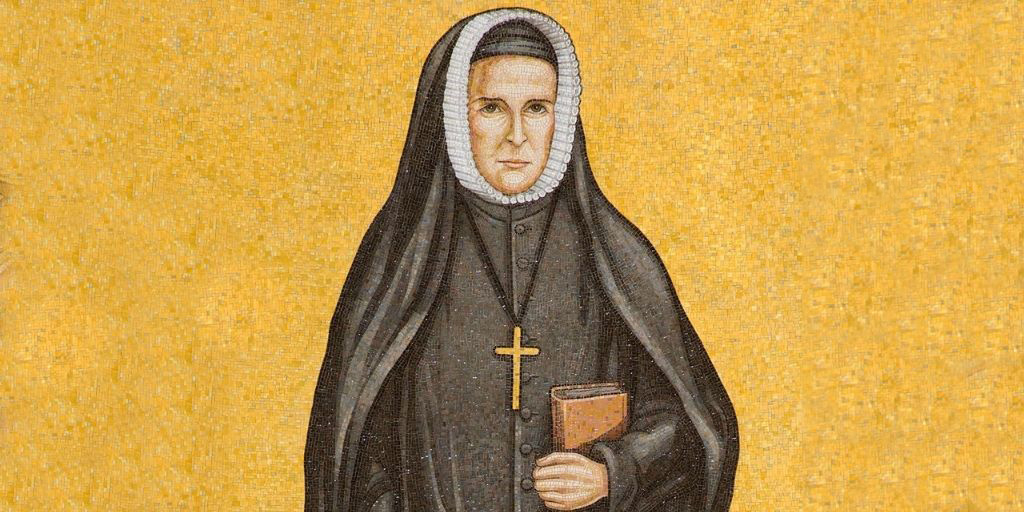
St Philippine Duchesne
Along with the founder, St Madeleine-Sophie Barat, St Philippine Duchesne was an early member of the Society of the Sacred Heart and established the congregation’s first communities in the United States. She spent the last half of her life teaching and serving the people of the Midwestern United States.
1769
Rose Philippine Duchesne is born in a well-to-do family in Grenoble, France. She is one of 8 children. Her father Pierre-Francois Duchesne is an established lawyer.
1781
Philippine is sent to boarding school at the Convent of Sainte-Marie in Grenoble together with her cousin.
1782
In May, Philippine’s father learns that she wishes to become a nun and abruptly withdraws her from the school.
1788
Aged 18, Philippine reconfirms that she still intends to become a nun. When her parents refuse permission, she asks her aunt to accompany her on a visit to the convent. Once at the convent she refuses to leave. Her aunt is left with no option other than to return home alone and inform Philippine’s parents that their daughter has joined the Sisters of Sainte-Marie.
1789
The French Revolution breaks out. The Sisters are therefore forced to leave the convent in 1792. Throughout the Revolution, the Convent will be used as a prison for priests and for those refusing to cooperate with the anti-clerical revolutionaries. Philippine returns home to her family. For the following 11 years, she risks her life nursing prisoners, helping priests and caring for poor children
1799
The French Revolution ends and Napoleon Bonaparte comes to power. The Catholic Church is once again able to operate freely through the Concordat of 1801.
1800
Madeleine Sophie Barat founds the Society of the Sacred Heart in Paris.
1801
Philippine buys the Convent of Sainte-Marie, which is now in a very poor state, from the French Government. She starts to rebuild it. As Mother Superior, she opens a boarding school with the sisters who returned. Some of the nuns leave after a short while, however the school does well. Student numbers grow and the school becomes self-supporting.
1803
In what is known as the Louisiana Purchase, France sells the colonial territory of Louisiana to the United States after it had been returned to it by Spain in 1802.
1804
On December 13, Sophie Barat visits the Convent of Sainte-Marie with 2 of her companions. Sophie Barat is 10 years younger than Philippine. This notwithstanding, Philippine accepts Sophie Barat as her Superior and guide.
1805
Philippine joins the Society of the Sacred Heart. She gives the Convent of Sainte-Marie to the Society.
1819
Bishop William Dubourg visits France seeking to recruit nuns to set up schools for Native American and French children in Louisiana. Philippine and 4 other companions sail to America. They arrive at New Orleans and sail by steamboat up the Mississippi River to St Louis, Missouri. Philippine establishes a school in a log cabin in St Charles, Missouri. This is the first free school west of the Mississippi. Philippine will be forced to close the school in St Charles after one year. Even so, she opens a new school in a nearby town called Florissant. She will eventually establish 3 other schools in Louisiana and Missouri.
1841
Philippine accompanies a Jesuit mission to Sugar Creek, Kansas where she establishes a school for native Potawatomi girls. She spends long periods in prayer so much so that the children call her Quahkahkanumad meaning ‘Woman Who Prays Always’. She leaves a long-lasting impression on the Potawatomi.
1842
Philippine’s health has deteriorated and she returns to St Charles, where the school has now reopened. She spends the last decade of her life there, nursing children in the infirmary and praying. She becomes increasingly feeble and lonely, longing for the letters she receives from Mother Madeleine Sophie Barat.
1852
Philippine passes away on November 18.
1988
St Pope John Paul II canonises Philippine on July 3.
